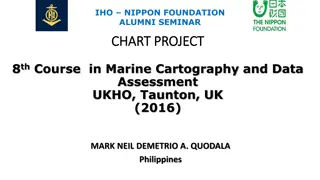Understanding Systems Thinking and its Applications in Sustainable Development Goals
Systems thinking is an approach that emphasizes looking at the whole rather than individual parts, helping to map complex interactions and manage uncertainties. This concept is essential for addressing Sustainable Development Goals (SDGs) as it enables a shift in thinking towards acknowledging complexities, exploring feedback, and understanding adaptive systems. The integration of systems thinking in coursework tasks allows students to explore and analyze diverse systems, identify key issues, and develop interventions based on causal relationships and feedback loops.
Download Presentation

Please find below an Image/Link to download the presentation.
The content on the website is provided AS IS for your information and personal use only. It may not be sold, licensed, or shared on other websites without obtaining consent from the author. Download presentation by click this link. If you encounter any issues during the download, it is possible that the publisher has removed the file from their server.
E N D
Presentation Transcript
Systems Thinking and SDGs Neil McBride
What is Systems Thinking? An approach that looks at the whole. Does not expect as single solution Seeks ways to map complex interactions Consider connectivity, boundaries and hierarchies Why is it difficult? Different way of thinking, different mindset Uncomfortable, embraces uncertainty Does not provide easy answer or quick on point solutions Often requires engagement with the human as well as the technical.
Systems Thinking Approaches Systems Dynamics Soft Systems Method Viable Systems Method Complexity Sciences Critical Systems Thinking
Systems Thinking and SDGs Acknowledging complexities and looking for links and synergies Recognising the whole is more than the sum of the parts Understanding and managing complex situations Shifting thinking Exploring feedback Concept of adaptive systems. Curriculum Framework for SDGs July 2017
IMAT2421 Systems Thinking 2nd year module. All business computing students Exploring systems to identify concepts Principle concepts of systems. Connectivity. Feedback loops, boundaries Systems Dynamics primarily around causal loop mapping Soft system methodology (Checkland) heart of module Rich pictures, CATWOE, root definition Purposeful Activity Model. Additionally Issue Catalogue. Interventions Viable System Model Introduction Assessment Point of assessment: Develop and demonstrate: Understanding of system concepts Principles and process of SSM Use of systems thinking tools
Coursework tasks Explore and gain an understanding of the SDG using the knowledge platform as a starting point: https://sustainabledevelopment.un.org/# Select an area or system to investigate. This could be at one of a number of hierarchical levels. You could select a specific case study, application or problem area. It does not have to relate to information systems, but you may wish to incorporate an information system focus. Carefully define your boundary. What is inside the system and what is not? What are the inputs and outputs? Gather information about your system. Start by creating a rich picture to describe the system and the problems associated with it Develop a list of problems and issues. As you read around the subject area, try to identify causal relationships which could be incorporated into a causal map. Next develop the CATWOE and root definitions. As you extend and develop your model, consider possible interventions and list identified cause / effect pairings.
The Approach Student allocated an SDG. Find out about SDG e,g, https://www.un.org/sustainabledevelopment/hunger/ Select a target Hierarchy : Decide on level. Global, UN level, Government level, local? Boundary : Decide on what is in the area of study and what is not. Perhaps conceptual. Or based on boundary, say geographical. Select example, situation, problem (messy), case study. Apply systems thinking tools.
Are we safe? How are we being protected from terror? How much money does this require running, and is it working Does training exist? Is there a budget for it? How do we use this info? How do we combat street crime? Is the Intel we are obtaining enough to fight terror and protect citizens Are we meeting our goals? Are we protecting people?
Customer Impacted by the System/changes Actors People who impact the system and carry out the changes Transformations Activities that result in the changes being carried out Terrorists, Terror groups, public Public, MI5 operatives, MI6 operatives, police New Government initiatives to allow for spying, and access to suspicious individuals internet history. Government law and government funding. Terrorism causes online debates all the time. Since the system is secretive the public perceive it as not worth it most of the time. The Government division GCHQ. Government laws, morality arguments. Funding for the programs. Worldview how people perceive how decisive the activity is Owner of the system Environmental Constraints
Peace and Justice is a UN sustainable development goal focused on human trafficking, sexual violence, homicide and corruption among others. While these are all travesties the main problem I will be focusing on is corruption and bribery. In western countries the situation is not dire, but corruption remains a huge issue in other less developed, with tax evasion, bribery and theft even accounting for $1.26 trillion per year according to the UN [1].
Conclusions Studying and teaching SDGs requires careful focus and bounding of system. SDGs can be used as a basis for developing understanding and applying skills and tools across disciplines. Studying SDGs requires holistic, out-of-the-box thinking and thus promotes the development of critical analysis skills.























